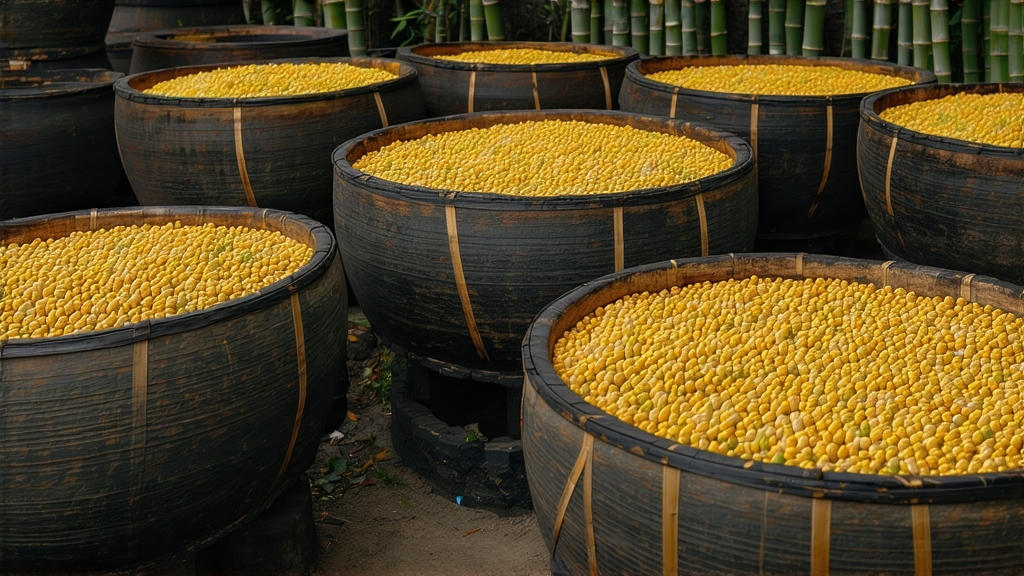
Tucked high in the mist-veiled Dabie Mountains of western Anhui, Huoshan Huangya has quietly embodied the elegance of China’s least-understood tea category for more than fourteen centuries. While green tea commands global fame and pu-erh enjoys cult status, yellow tea remains a whispered legend even inside China; within that whisper, Huoshan Huangya is the clearest, most melodious note. Once sealed in lacquered caskets and rushed by horseback to the Tang-dynasty court, the tea was celebrated by Emperor Li Shimin for its “golden dew that calms the dragon’s breath.” Later, Song-era tea-officials recorded its harvest in the Anhui Provincial Chronicles, noting that pickers had to “fast and bathe before touching the bud, lest earthly odors disturb its immortal soul.” By the Ming dynasty the leaves were so coveted that counterfeit versions appeared in Nanjing markets, prompting the magistrate of Huoshan County to issue the world’s first known tea-origin certificate, stamped with a copper seal still displayed in the local museum.
Huoshan Huangya is not a single garden name but a protected geographical indication that embraces three micro-valleys—Foziling, Jinjiaping, and Sunjiawan—each offering a distinct expression of yellow tea. The Foziling style, grown under towering bamboo groves, carries a faint bamboo-sap sweetness; Jinjiaping leaf, kissed by cooler night air, develops higher orchid aromatics; Sunjiawan gardens, nourished by mineral-rich mountain springs, yield a thicker, almost marrow-like body. All three, however, must be crafted from the local small-leaf cultivar “Huoshan Zaoya,” a Camellia sinensis var. sinensis ecotype that has acclimated to sharp diurnal swings and thin granitic soil. The cultivar’s tiny, tight buds—never longer than 2.5 cm—are the raw material that makes the painstaking “menhuang” (sealed yellowing) transformation possible.
The crafting calendar is brutally short: only ten days in late March when the bud is still a “sparrow’s tongue” and the first leaf remains folded like a closed fan. Experienced pluckers break each shoot with a fingernail click, dropping it into a bamboo tube hung from the waist; the goal is to keep the bud intact and avoid the bruising that would later oxidize the leaf into something closer to black tea. Within two hours the harvest reaches the mountain-top workshop, a cedar-plank building whose rafters are blackened by decades of pine-charcoal smoke. Here the leaves undergo seven discrete steps, each calibrated to coax chlorophyll into quiet submission while nurturing a nascent golden hue.
First comes “shaqing,” a kill-green flash of 140 °C heat in a shallow, cast-iron wok. The tea master uses only the heel of her palm to tumble 250 g of buds for exactly 78 seconds; longer and the enzymes die, shorter and grassy astringency lingers. Immediately the scorched leaves are wrapped in a piece of damp, unbleached cotton and placed inside a bamboo chamber whose temperature hovers at 32 °C and relative humidity at 78 %. This is the first “menhuang” rest, lasting 60 minutes, during which the bundle is opened every 20 minutes to release trapped carbon dioxide and to rotate the buds so that yellowing proceeds evenly. The chemical heart of yellow tea is formed here: chlorophyll degrades into pheophytin, polyphenols oxidize partially, and a unique theaflavin-thearubigin complex emerges, gifting the later liquor its luminous apricot glow.
After three cycles the leaves are re-warmed over a charcoal brazier screened with fine bamboo mesh—a step called “maohong” that reduces moisture to 20 % while imprinting a whisper of smoke. Then comes the second menhuang, cooler and longer (28 °C for four hours), allowing the buds to soften further and develop the characteristic “three yellows”: yellow bud, yellow leaf vein, and yellow down. A final low-temperature bake at 55 °C for two hours sets the aroma, leaving the finished tea at 5 % moisture, ready for aging yet already fragrant enough to scent an entire room.
Unlike green tea, which is best consumed within six months, Huoshan Huangya rewards patience. Stored in unglazed clay jars buried in a cool sand cellar, the leaf continues a slow,